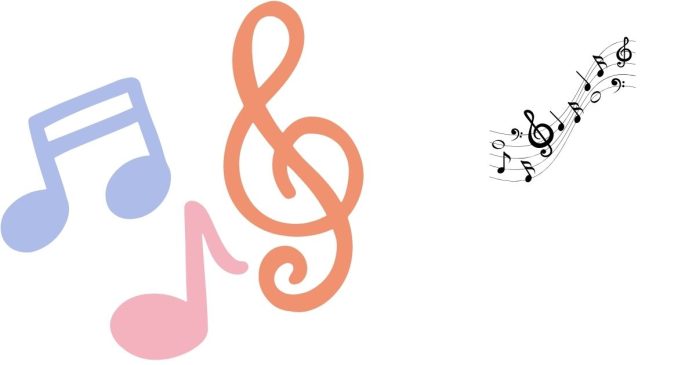In music, intensity refers to the degree of energy, emotion, or dynamics present in a performance or composition. It can be felt through changes in volume, tempo, harmony, rhythm, and even the tension within the music. Intensity can be used to convey a range of emotions—from powerful excitement to deep sorrow.
Here are some examples of how intensity manifests in music:
1. Dynamics (Volume Changes):
- Crescendo: A gradual increase in volume. For example, in Beethoven’s Symphony No. 5, the famous four-note motif gradually builds in intensity as the volume increases, creating a sense of growing tension.
- Decrescendo (Diminuendo): A gradual decrease in volume. This might be used to convey a sense of fading or loss, as seen in many slow movements of classical music.
2. Tempo Changes (Speed):
- Accelerando: A gradual increase in speed. This can build excitement and urgency. For example, in Stravinsky’s The Rite of Spring, the tempo picks up during the Sacrificial Dance, building tension.
- Ritardando: A slowing down of tempo. This can create a sense of dramatic tension or emotional depth, often used at the end of a piece or section for effect.
3. Rhythm and Articulation:
- Syncopation: Off-beat rhythms that create a feeling of surprise or urgency. In jazz or funk, syncopation is often used to increase the intensity of the music.
- Staccato: Short, sharp, detached notes. This can add a feeling of sharpness or urgency. For instance, in the “Mars” movement of Holst’s The Planets, the staccato rhythms drive the intensity of the music forward.
- Legato: Smooth and connected notes, but if played with emotional expression, this can create a feeling of deep intensity, especially in slower pieces.
4. Harmony and Dissonance:
- Dissonance: Chords or intervals that create tension and a sense of instability. For example, in the opening of Also Sprach Zarathustra by Richard Strauss, the use of dissonance in the brass section creates an intense, almost primal feeling.
- Consonance: A harmonious and stable sound that resolves tension. The shift from dissonance to consonance can be a powerful way to heighten the intensity of a piece.
5. Instrumentation:
- Orchestral Forces: The use of a large orchestra with brass, percussion, and strings playing loudly and together can create a massive intensity. For instance, O Fortuna from Carl Orff’s Carmina Burana uses a full choir and orchestra, creating a feeling of overwhelming power.
- Piano: A solo piano piece can have immense intensity through dynamic contrasts. Chopin’s Ballade No. 1 uses a combination of rapid, virtuosic passages and lyrical moments to create emotional intensity.
- Guitar Riffs: In rock or metal music, a distorted, fast guitar riff can immediately increase the intensity of the piece. Think of the iconic riff in Led Zeppelin’s Whole Lotta Love.
6. Tension and Release:
- Building Tension: Many pieces of music build intensity through the use of unresolved harmonic progressions or repeated motifs that demand a resolution. For instance, in Wagner’s Tristan und Isolde, the music builds harmonic tension that is only resolved much later.
- Dramatic Release: The contrast between intense, fast sections and slower, more relaxed moments also creates intensity. In Symphonie Fantastique by Hector Berlioz, the sudden shifts in mood from passionate to somber add layers of emotional intensity.
7. Emotional Expression (Lyricism):
- Vocal Performance: In operatic music, vocal delivery is key to intensity. For instance, Maria Callas’ dramatic performance of the aria Casta Diva from Bellini’s Norma uses a range of dynamics and phrasing to convey emotional intensity.
- Song Lyrics and Delivery: In pop or rock music, intense lyrics, such as those in Tears in Heaven by Eric Clapton or Hurt by Nine Inch Nails (later covered by Johnny Cash), convey emotional depth and intensity through both the lyrics and vocal delivery.
8. Genre-Specific Intensity:
- Classical Music: As seen in Beethoven’s Symphony No. 9, intensity can be created through the vast contrast between quiet, slow sections and fast, loud ones, as well as through the buildup of motifs.
- Jazz: Intensity in jazz might come from improvisation, with musicians creating spontaneous and energetic solos that push the limits of the rhythm section. Miles Davis’ Kind of Blue uses subtle intensity through modal jazz and improvisational dialogue.
- Rock/Metal: Intensity is often driven by powerful electric guitar riffs, fast tempos, and heavy drumming, as seen in Metallica’s One or Nirvana’s Smells Like Teen Spirit.
Examples of Intense Musical Moments:
- Beethoven’s 5th Symphony (First Movement): The famous “da-da-da-daah” motif, played by the orchestra, builds in intensity through repetition and dynamic contrast.
- Stravinsky’s The Rite of Spring (The Sacrificial Dance): The rhythmic complexity, dissonance, and frenzied pace create a heightened sense of intensity that led to the famous riot at its premiere.
- Carl Orff’s O Fortuna from Carmina Burana: A choral and orchestral work that uses powerful dynamics and rhythmic drive to convey a sense of unstoppable force.
Conclusion:
In summary, musical intensity is created through a combination of volume, speed, rhythm, harmonic tension, and the emotional delivery of the performers. It’s a key element that helps to convey the emotional core of a piece, whether it’s a sweeping orchestral work, a jazz improvisation, or a fast-paced rock song.


